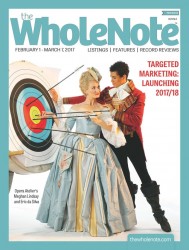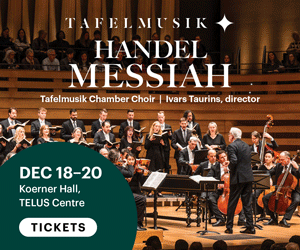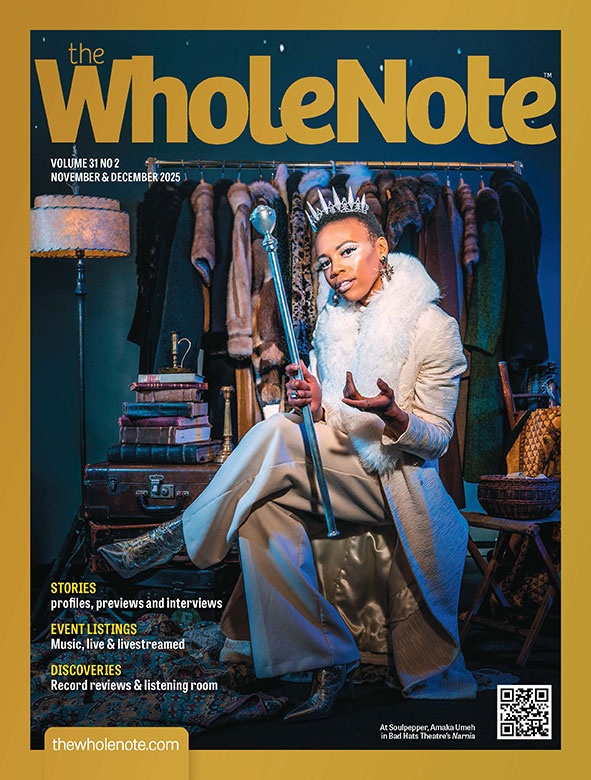 Wouldn’t it be nice if in the coming year…the phrase “making Toronto into a real music city” disappeared once and for all from the rhetorical toolkit of certain elected officials who, in the interests of not embarrassing any particular mayor, shall remain nameless?
Wouldn’t it be nice if in the coming year…the phrase “making Toronto into a real music city” disappeared once and for all from the rhetorical toolkit of certain elected officials who, in the interests of not embarrassing any particular mayor, shall remain nameless?
Why? Because it is worse than meaningless drivel; it is actually poisonous. It sounds like a noble mission, well worth studying (top-down, of course). But it does way more harm than good. You see, in order to accept the premise that Toronto needs to be “made into a real music city,” one has to buy into the prior proposition that, right now, “a real music city” is something that Toronto is not. A position with which I very respectfully beg to differ.
Differing, of course, is not difficult to do, but is not in and of itself helpful unless one proposes a useful alternative to the counterproductive bafflegab to which one is objecting.
The challenge we are facing, Mr. Mayor, is not that of “making Toronto into a real music city.” Rather it’s the challenge of figuring out how to keep real the astonishing music city that we already are.
Problem is, to start doing that, you’d have to actually believe it.
So take a look at the level of musical activity represented daily, weekly, monthly in this one small publication alone, Mr. Mayor. And realize that we serve and reflect only one relatively small part of the overall music-making spectrum. Then ask yourself what the things are that keep this astonishing musical ecosystem alive. And once you’ve come closer to understanding that, ask yourself what the things are that are happening under your watch that pose the greatest threat to this ecosystem’s existence.
Starting with an out-of-the-box comparison might be useful, so here’s one: a city cannot really hope to be a safe city for all its citizens, when the majority of its police officers have, for more than the past two decades, decided they can no longer afford to live here and have moved themselves and their families outside our city’s borders.
Similarly, we are rapidly becoming a city where the working poor (and most musicians fall into that category) are daily confronted with policies and economic realities that force displacement from our downtown of renters, of our young people, of artists, idealists, dreamers…
The urban corners and cracks and crevices where these dreamers learn to ply their trades, fixing up their surroundings as they go, are disappearing, threatened by lack of affordable accommodation. High-rise development wherever two or three properties can be assembled; commercial tax policies that penalize rebuilding small, even when the same uses are proposed for the new spaces; commercial bank financing that penalizes developers who try to factor independent business into mortgage financing; tired rows of the same old franchises on the ground floors of every new development making a mockery of the planning department’s commitment to vibrant mixed-use main street development… There are dozens and dozens of examples like these which could be found and remedied, if they were understood as problematic.
What I am trying to say is that far more than any of these individual factors, the vibrant, street-level cultural fabric of our urban life is threatened when our highest officials dismiss it as “not “real” and decide to take a top-down social engineering approach to solving a problem you exacerbate by the way you define it. So no more “making it real,” please, Mr. Mayor. Try “Our Music City: Keeping It Real,” instead, with pride in your voice for good measure.
Go plant a tomato: Jim Galloway, longtime artistic director of the Toronto Downtown Jazz Festival, and for 16 years the jazz columnist of The WholeNote, was as proud of being a Torontonian as he was of never losing his Scottish accent.
In the spring following his death on December 30, 2014, there was a gathering in his honour at Whistler’s Grille (Broadview and Mortimer), upstairs in the 4,000 sq ft McNeil Room. The place was packed. And as we were leaving, each of us was handed (Jim’s wish) a little box containing a tomato plant seedling to plant the same spring. How like him. Not “mighty oaks from tiny acorns grow” but a sense of cultural legacy as an aggregation of hundreds of small, nourishing, affectionate sustainably urban gestures.
Standing at the bus stop after, a few of us mused on how, poignant as the moment was, we’d likely miss him more with the passing of time. Wouldn’t it be grand, we said, if the Jim Galloway Wee Big Band could reconstitute itself, seasonally, from time to time to celebrate his memory through the music he loved to play.
Some things do come to pass: February 16 The WholeNote and The Ken Page Memorial Trust will host a third reunion of the Jim Galloway Wee Big Band under the direction of Martin Loomer, right here in the ground floor “Garage” performance space at 720 Bathurst. (There’s an ad with all the details on page 59.)
Jim loved the ground floor space here with its wooden beams and pillars, high ceilings and exposed brick. In the year or so before the Centre for Social Innovation bought the building, while it was mostly locked and empty, teetering between possibly being sold for condo redevelopment or else being turned into high-end offices, we’d ride the freight elevator down from the fifth floor WholeNote office and turn the lights on and talk about how it was opportunities like these, taken or missed, that would over time define the future of our music city. Little sustaining cultural acts, seeding hope, one tomato plant at a time.
publisher@thewholenote.com




